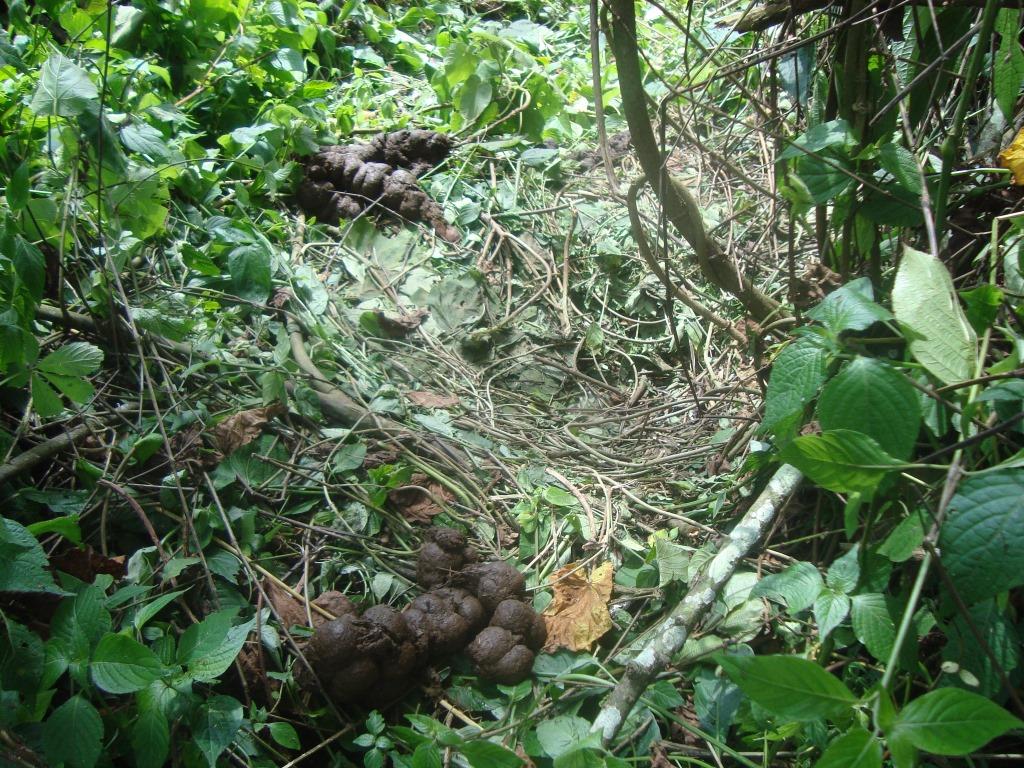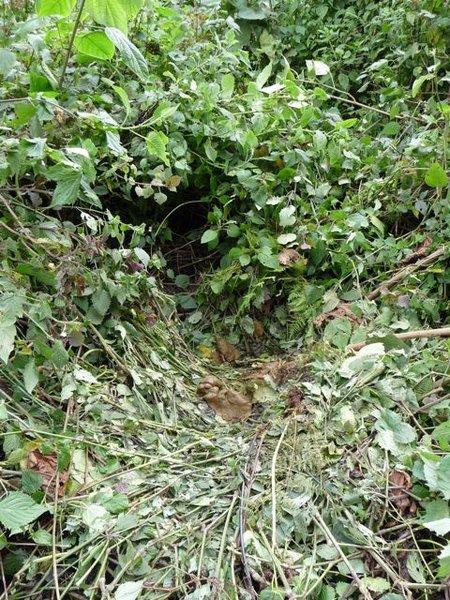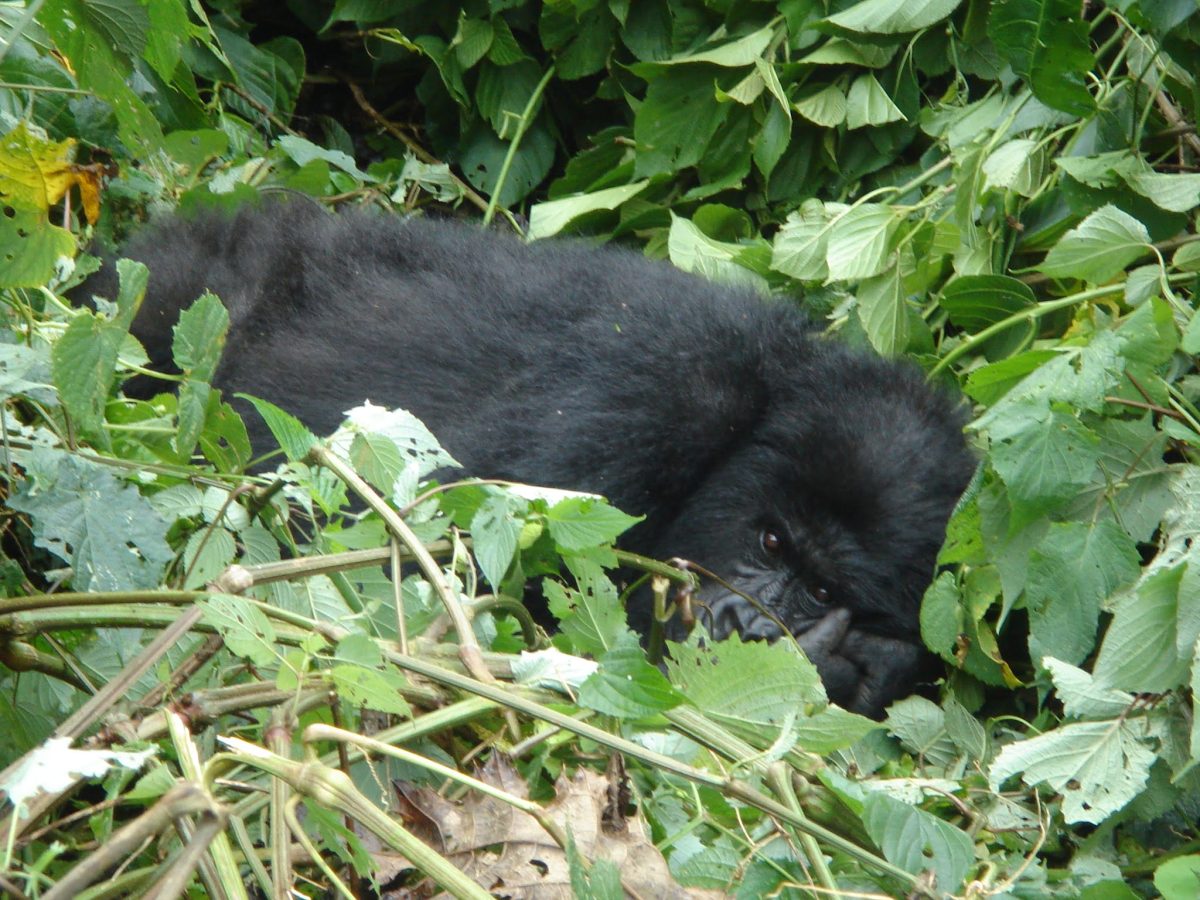The Life of a Silverback Gorilla
May 16, 2025Gorilla Diet in Bwindi Forest
May 16, 2025Gorillas, our closest wild relatives, live complex lives deeply connected to their environment. Among their fascinating behaviors, nest building stands out as one of the most remarkable and often overlooked. Far from simply lying on the ground, gorillas build carefully crafted nests every night—an essential part of their daily rhythm and survival in the rainforest. In this article, we dive into how, where, and why gorillas build nests, and what this reveals about their intelligence, culture, and adaptation.
What Is a Gorilla Nest?
A gorilla nest is a structure made of leaves, branches, and vegetation where a gorilla sleeps at night—or rests during the day. These nests provide comfort, warmth, and safety in the dense forests of Central and East Africa. Both mountain gorillas and lowland gorillas build nests, though materials and locations may vary depending on the environment.
Gorilla nests are surprisingly well-constructed. Using their strong arms and opposable thumbs, gorillas bend, weave, and arrange branches in a circular shape to form a soft base. They often add a layer of leaves for added cushioning and insulation. The nests are large enough to accommodate their massive bodies—especially in the case of silverback gorillas, which can weigh over 200 kilograms (440 pounds).

Do Gorillas Build a New Nest Every Day?
Yes! One of the most fascinating aspects of gorilla nesting behavior is that gorillas build a new nest every single night. They rarely reuse an old nest unless it’s a daytime rest nest. Each evening, as the group settles down, every individual constructs a nest within close range of one another. This includes adults, sub-adults, and even juveniles, who usually build simpler versions or sleep close to their mothers.
By creating fresh nests daily, gorillas avoid the buildup of parasites, keep their resting place clean, and reduce the chance of predators locating them. It’s a hygienic and adaptive behavior that showcases the gorilla’s intelligence and understanding of its natural surroundings.
Where Do Gorillas Build Their Nests?
Mountain gorillas, such as those in Bwindi Impenetrable National Park in Uganda and Volcanoes National Park in Rwanda, primarily build ground nests. Due to their large size and the density of vegetation on the forest floor, ground nests provide more stability and insulation in their cool, misty high-altitude habitats.
In contrast, lowland gorillas, especially juveniles and lighter individuals, sometimes build nests in trees, often several meters above the ground. These tree nests are made on strong branches that can support their weight and are more common in regions where the forest canopy is accessible and sturdy.
Interestingly, young mountain gorillas may occasionally experiment with arboreal nests, but most adult mountain gorillas prefer the ground due to their size and the terrain.

Day Nests vs. Night Nests
While most people associate gorilla nests with sleeping at night, gorillas also construct day nests for resting during the afternoon. These are usually less elaborate and may be reused occasionally during a short break in the day’s activities. A gorilla family will typically travel several kilometers daily in search of food, then pause around midday to nap or groom, often using temporary nests made quickly on the ground or in shrubs.
In contrast, night nests are more carefully constructed. Gorillas take 5 to 15 minutes to build their sleeping nest, ensuring it’s secure, warm, and comfortable. These nests become even more essential in cold or rainy weather, as they help gorillas conserve body heat during the night.
The Social Function of Nesting
Nesting is more than just resting—it plays a crucial social role in gorilla groups. Nesting sites are usually chosen by the dominant silverback, who leads the family group. The gorillas build their nests in close proximity to one another, reinforcing group cohesion and safety in numbers. Babies and young gorillas sleep with or near their mothers, strengthening maternal bonds.
As they grow older, juveniles begin to build their own nests, learning from adults by observation. This behavior highlights the cultural transmission of skills within gorilla groups, where young gorillas adopt behaviors by imitating the actions of experienced members.
What Scientists Learn from Gorilla Nests
Conservationists and researchers use gorilla nests as an important tool for tracking and studying wild gorillas. By counting nests in a particular area, scientists can estimate the number of individuals in a gorilla group. Since gorillas build one nest per night, a trail of nests left behind gives clues about their movements, habitat use, and behavior.
Nest surveys are especially valuable in dense forests where gorillas are hard to observe directly. Researchers also collect hair, fecal matter, or parasites from old nests to study gorilla health, diet, and genetics without invasive methods.
Environmental Adaptations in Nesting Habits
Gorilla nesting behavior also reflects how they adapt to environmental conditions. For example, during the rainy season or in colder temperatures, gorillas may build thicker nests using more insulating materials such as fern leaves and vines. In windy conditions, nests may be built near trees or large rocks for shelter. This adaptability shows the gorilla’s deep awareness of its habitat and the ability to modify behavior for survival.
In areas affected by human disturbance, gorillas may shift their nesting patterns to avoid nearby activity. This makes nesting behavior a critical indicator of environmental stress or threats to gorilla populations.
Where to See Gorilla Nesting in the Wild

One of the most insightful experiences during a gorilla trek is stumbling upon freshly built or recently abandoned nests. These nests are not just scattered piles of leaves and branches—they tell a story of gorilla movement, rest, and survival. Visitors to Bwindi Impenetrable National Park in Uganda or Volcanoes National Park in Rwanda often get to see these nests up close, offering a rare glimpse into the daily routines of these gentle giants.
Nest Sightings on Gorilla Treks
Gorilla tracking usually begins in the morning, following paths through dense forest in search of a habituated gorilla family. Park rangers and expert trackers often begin their search by heading to the spot where the gorillas nested the previous night. Gorillas typically do not move far from their last nesting site unless food availability or disturbance requires it.
Along the way, trekkers may encounter:
Still-warm nests, indicating the gorillas left recently.
Nest clusters, showing where the group slept together.
Juvenile nests, smaller and less structured than adult ones.
Dung piles and hair, left behind and often studied by researchers.
This encounter with nests often comes before the face-to-face gorilla encounter, setting the tone and building anticipation while educating visitors about gorilla habits and ecology.
Nesting in Bwindi Impenetrable Forest
Bwindi Impenetrable National Park, a UNESCO World Heritage Site, is a prime location to witness gorilla nesting habits in a true jungle environment. With altitudes ranging from 1,160 to 2,607 meters (3,800 to 8,550 feet), the forest is steep, rugged, and thick with undergrowth, vines, and ancient trees.
Here, mountain gorillas build ground nests on natural platforms of ferns, leaves, and intertwined branches, tucked under dense vegetation for shelter. Nesting sites are often located on narrow forest ridges or steep hillsides, offering protection from both the elements and predators. Due to the forest’s remote and pristine condition, every gorilla group maintains a distinct nesting area that moves slightly each day as they forage for food.
Visitors to sectors like Buhoma, Ruhija, Nkuringo, and Rushaga may notice how terrain affects nest placement—gorillas tend to build on flatter areas within their steep habitat, using whatever foliage is available.
Nesting in Volcanoes National Park
Volcanoes National Park lies in Rwanda’s Virunga Mountains and offers a contrasting but equally rich environment for gorilla nesting. This park is dominated by high-altitude bamboo forests, moss-covered trees, and volcanic slopes that rise above 3,000 meters (nearly 10,000 feet).
In this ecosystem, gorilla nests may be found both on the ground and in low shrubs, especially where bamboo is abundant. The cooler climate and elevation mean gorillas often insulate their nests with layers of bamboo leaves or tree moss, which helps retain warmth through the night.
Nesting habits in Volcanoes can also be influenced by the group’s movement across slopes of Mount Karisimbi, Mount Sabyinyo, and Mount Bisoke. Rangers are well-trained to read the signs of nesting—from trampled foliage to bite marks on bamboo stems—helping guide tourists to the gorilla groups more effectively.
How to Visit Bwindi and Volcanoes National Park
Visiting the world of mountain gorillas—where you can observe their nesting habits, social dynamics, and daily routines—is a once-in-a-lifetime adventure. To do this, travelers must obtain gorilla trekking permits, which are strictly regulated to ensure conservation and minimize human impact. Permits can be arranged through the Uganda Wildlife Authority (UWA) for treks in Bwindi Impenetrable National Park, or via the Rwanda Development Board (RDB) for those heading to Volcanoes National Park.
Getting to Bwindi Impenetrable National Park
Most international travelers fly into Entebbe International Airport, located near Uganda’s capital, Kampala. From there, you have two main options to reach Bwindi:
By Air: Take a domestic flight operated by AeroLink Uganda or other regional airlines to either Kihihi Airstrip (for Buhoma and Ruhija sectors) or Kisoro Airstrip (for Rushaga and Nkuringo sectors). Flights are short—usually around 1 hour—and offer spectacular aerial views of Uganda’s lakes, forests, and mountains.
By Road: Adventurous travelers may opt for the overland route—an 8 to 10-hour scenic drive through southwestern Uganda. This journey winds through terraced hills, rural villages, tea plantations, and beautiful highlands, providing cultural insights along the way. Though long, it’s a rewarding introduction to Uganda’s natural beauty.
Getting to Volcanoes National Park
For those trekking gorillas in Rwanda, the journey is faster and more accessible. Arrive at Kigali International Airport, Rwanda’s main international gateway. From Kigali, it’s a 2.5 to 3-hour drive to Musanze (formerly Ruhengeri), the nearest town to Volcanoes National Park.
This smooth and scenic route passes through picturesque landscapes, rolling hills (hence Rwanda’s nickname, “The Land of a Thousand Hills”), and local farms. Many travelers choose to overnight in Kigali upon arrival or departure for added flexibility.
Once in Musanze, trekkers report to the Kinigi park headquarters for a pre-trek briefing before heading into the forest to find their assigned gorilla family.
Gorilla Trekking Permits & Guided Experience
Permits are mandatory for all gorilla treks and must be secured well in advance, especially during peak seasons (June–September and December–February). The number of daily permits is limited to reduce human-wildlife conflict and maintain ethical tourism standards.
Each trek is led by expert trackers and rangers, who start by locating the gorilla family’s previous night’s nest. Gorillas typically build new nests every evening, so following these clues leads guides directly to the group with a high success rate of sightings.
Permits currently cost:
$800 USD per person in Uganda (as of 2024)
$1,500 USD per person in Rwanda
These fees directly support conservation and community projects, helping protect the gorillas and improve the livelihoods of people living around the parks.
Where to Stay Near Gorilla Habitats
Choosing the right accommodation enhances your gorilla trekking adventure. Staying close to park headquarters allows for a smooth start to your early morning trek and minimizes travel fatigue.
Lodges and Camps in Bwindi Impenetrable National Park
Bwindi offers a wide range of eco-lodges and safari accommodations to suit every budget:
Luxury: Sanctuary Gorilla Forest Camp (Buhoma sector) offers all-inclusive comfort with forest views and private chalets often visited by gorillas themselves.
Midrange: Rushaga Gorilla Havens Lodge (Rushaga sector) offers cozy rooms, local cuisine, and warm hospitality within reach of multiple habituated gorilla groups.
Budget: Buhoma Community Rest Camp is perfect for budget travelers seeking authentic experiences and basic comfort while supporting local community efforts.
Other notable options include Mahogany Springs Lodge, Ichumbi Gorilla Lodge, and Nkuringo Bwindi Gorilla Lodge depending on the trekking sector.
Lodges and Hotels in Volcanoes National Park
In Rwanda, most visitors base themselves in Musanze or near Kinigi, where the park headquarters are located. Popular options include:
Luxury: Sabyinyo Silverback Lodge offers a lavish retreat with views of the Virunga volcanoes and personalized service, ideal for those wanting comfort and exclusivity.
Boutique: Five Volcanoes Boutique Hotel provides stylish rooms, excellent meals, and proximity to trekking starting points.
Eco-Luxury: Virunga Lodge by Volcanoes Safaris is perched on a ridge overlooking Lakes Burera and Ruhondo, known for its stunning panoramas and eco-friendly design.
